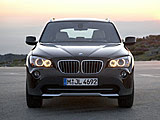At the 2011 Geneva Motor Show Koenigsegg is presenting the brand new Koenigsegg Agera R - Quicker than lightning! The Agera R on the Koenigsegg show stand - production car # 83 - is inspired by the legendary Speed Racer theme, as specified by the owner of the car. Speed Racers main colour is white - so is snow. Equipped with special Michelin tires and a custom made Thule Roof Box - Speed Racer is ready to attack the ski resorts!
In 2010 Koenigsegg presented a pre-production version of the Koenigsegg Agera. Since then the pre-production car and several test mules have continued the Agera development program. The Agera pre-production car has been driven by several influential motoring journals, resulting in raving reviews and awards, such as for example becoming the "Top Gear Hypercar of the Year". Please see attached quotes from these test-drives.
All in all the production versions of the Agera are created to take the Koenigsegg experience to the next level both on the road and the track, still maintaining the largest luggage space in the industry in combination with the unique Koenigsegg door system and detachable/stow-able hardtop.
There are several differences between the pre-production car previously shown and the production versions. For example, the engine and gearbox configurations are different and some revolutionary interior, chassis and aerodynamic features adorn the production version of the Agera that has never been shown before. For more information, please read the full press release below.
In 2010 Koenigsegg presented a pre-production version of the Koenigsegg Agera. Since then the pre-production car and several test mules have continued the Agera development program. The Agera pre-production car has been driven by several influential motoring journals, resulting in raving reviews and awards, such as for example becoming the "Top Gear Hypercar of the Year". Please see attached quotes from these test-drives.
All in all the production versions of the Agera are created to take the Koenigsegg experience to the next level both on the road and the track, still maintaining the largest luggage space in the industry in combination with the unique Koenigsegg door system and detachable/stow-able hardtop.
There are several differences between the pre-production car previously shown and the production versions. For example, the engine and gearbox configurations are different and some revolutionary interior, chassis and aerodynamic features adorn the production version of the Agera that has never been shown before. For more information, please read the full press release below.
TAKE ACTION
Although sharing the same values and philosophies as previous Koenigsegg models, the Agera takes the Koenigsegg experience to a completely new level.
Similar to all previous Koenigsegg hypercars, the new Agera is the brainchild of Christian von Koenigsegg. The Agera has come to life in order to set new benchmarks for Hypercars when it comes to control, handling, speed, comfort, practicality and sheer driving enjoyment, while combining these features with clean, efficient and beautiful design.
The name Agera set the tone for the new project. Agera means "to take action" in Swedish. It is also short for the ancient Greek word Ageratos which means "ageless". These two are very suitable meanings, for the car building the future of Koenigsegg.
Although sharing the same values and philosophies as previous Koenigsegg models, the Agera takes the Koenigsegg experience to a completely new level.
Similar to all previous Koenigsegg hypercars, the new Agera is the brainchild of Christian von Koenigsegg. The Agera has come to life in order to set new benchmarks for Hypercars when it comes to control, handling, speed, comfort, practicality and sheer driving enjoyment, while combining these features with clean, efficient and beautiful design.
The name Agera set the tone for the new project. Agera means "to take action" in Swedish. It is also short for the ancient Greek word Ageratos which means "ageless". These two are very suitable meanings, for the car building the future of Koenigsegg.


















































